Tom's Hardware Verdict
The Monoprice Zero-G 42891 delivers a 32-inch QHD/VA curved panel with 165 Hz, Adaptive-Sync, HDR and extended color for a super-low price. It has superb contrast, an accurate and wide color gamut and solid video processing for a great gaming experience on a budget.
Pros
- +
+ Excellent contrast
- +
+ Wide and accurate color gamut
- +
+ Solid video processing
Cons
- -
No USB
- -
No speakers
- -
No sRGB mode
Why you can trust Tom's Hardware
Today’s best gaming monitors with QHD resolution (2560x1440) are extremely popular thanks to their ideal price/performance ratio. They hit a sweet spot where prices are low and frame rates are high. In a 27 or 32-inch size, they provide lots of fine detail and a smooth pixel structure.
I’ve looked at many 27-inch QHD screens that run at 165 Hz, but it seems that 32-inch panels are becoming more common. They were once a costly option, but I’m seeing more and more 32-inch displays that cost only a tiny bit more than their 27-inch cousins.
Monoprice is already known for delivering terrific value with its Dark Matter and Zero-G lines, and the 42891 is no exception. It’s a 32-inch curved VA panel with QHD resolution, 165 Hz, Adaptive-Sync, HDR and extended color. And at this writing, it’s selling for less than $325, which is good bargain for gamers looking to make the jump to the 32-inch form-factor.
Monoprice Zero-G 42891 Specs
| Panel Type / Backlight | VA / W-LED, edge array |
| Screen Size / Aspect Ratio | 32 inches / 16:9 |
| Row 2 - Cell 0 | Curve Radius: 1500mm |
| Max Resolution & Refresh Rate | 2560x1440 @ 165 Hz |
| Row 4 - Cell 0 | FreeSync: 48-165 Hz |
| Row 5 - Cell 0 | G-Sync Compatible |
| Native Color Depth & Gamut | 8-bit / DCI-P3 |
| Response Time (GTG) | 6ms |
| Brightness (mfr) | 300 nits |
| Contrast (mfr) | 3,000:1 |
| Speakers | None |
| Video Inputs | 2x DisplayPort 1.4 |
| Row 12 - Cell 0 | 2x HDMI 2.0 |
| Audio | 3.5mm headphone output |
| USB 3.0 | None |
| Power Consumption | 29w, brightness @ 200 nits |
| Panel Dimensions WxHxD w/base | 28.1 x 8.9 x 19.9 inches 713 x 227 x 506 mm |
| Panel Thickness | 4.4 inches (113mm) |
| Bezel Width | Top/sides: 0.39 inch (10mm) |
| Row 19 - Cell 0 | Bottom: 0.75 inch (19mm) |
| Weight | 15.7 pounds (7.14kg) |
| Warranty | 1 year |
We recently published our review of Dell’s S3222DGM, which is the closest competitor to the Zero-G 42891. They have similar specs except for one; Dell doesn’t offer HDR support. In this case, the impact isn’t significant. The Monoprice supports HDR10 signals and switches modes automatically, but it doesn’t provide any extra dynamic range because there’s no dynamic contrast. So in most cases, the HDR and SDR images look similar.
The VA panel (see IPS vs VA panels) is curved to a not-too-extreme 1500mm radius. It wraps enough to create an immersive effect but not so much that it distorts images. You can edit documents and navigate through spreadsheets without seeing curved lines or text that looks odd. And the 16:9 aspect ratio means you get enough height to place a Word document at the center of the screen and view an entire page without scrolling.
The Monoprice Zero-G 42891 has suitable gaming cred with a reliable 165 Hz refresh rate and Adaptive-Sync. During my tests, it ran FreeSync from 48 to 165 Hz and operated flawlessly with a G-Sync system (although the Zero-G 42891 has not been certified by Nvidia). In addition to three overdrive settings, you also get MPRT, a blur-reducing backlight strobe. Using it cancels out the overdrive, Adaptive-Sync and HDR. It also reduces brightness a little, but it does increase motion resolution.
The Zero-G 42891 sports a wide color gamut that covers over 88% of DCI-P3 which is a tick higher than average for the category. I also found decent accuracy with only a minor need for calibration. However, the star of the show is contrast. In my experience, larger panels tend to have higher contrast, and this Monoprice display delivers a solid 3,300:1. That gives the monitor significantly greater depth and dimension than an IPS monitor. In addition, it increases the perception of color saturation.
Get Tom's Hardware's best news and in-depth reviews, straight to your inbox.
There aren’t a lot of bells and whistles here, just honest performance at a low price. Has Monoprice delivered a value standout? Let’s take a look.
Assembly and Accessories of Monoprice Zero-G 42891
You’ll need to break out the Phillips-head screwdriver to assemble the Monoprice Zero-G 42891 once you remove it from its crumbly foam packaging. The base bolts to a solid upright which is then bolted to an adaptor that snaps onto the curved panel.
If you’d rather use an aftermarket arm or bracket, four long fasteners are included for the 75mm VESA mount. The only cables included are DisplayPort and IEC for the internal power supply.
Product 360: Monoprice Zero-G 42891
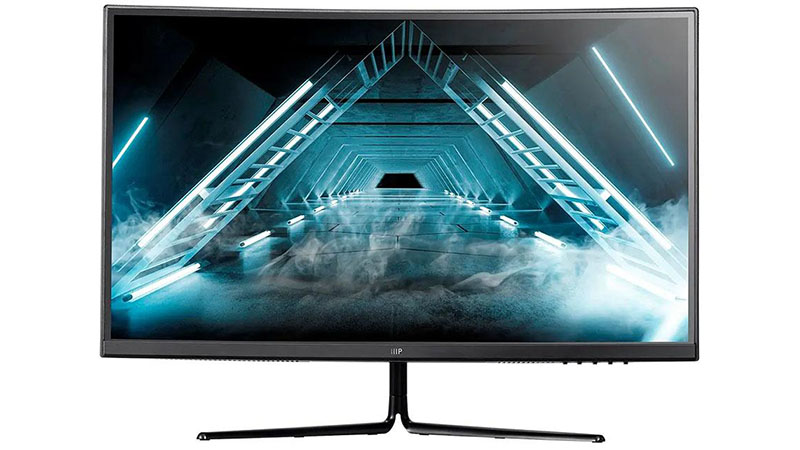
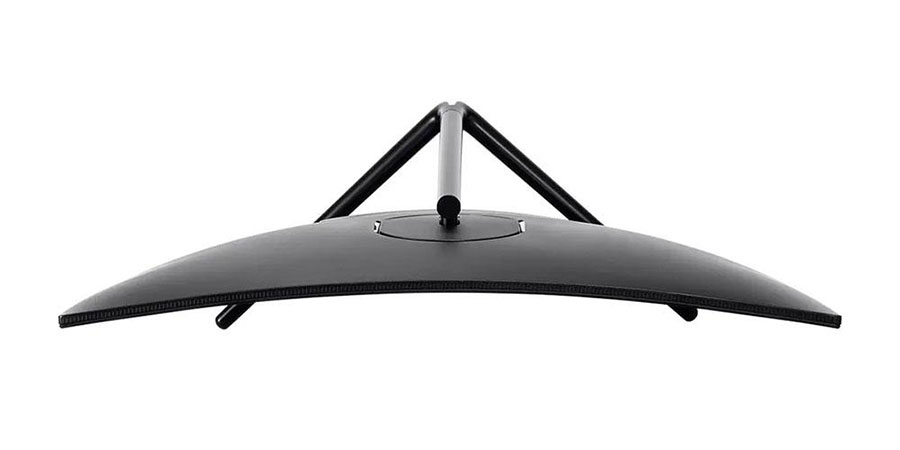
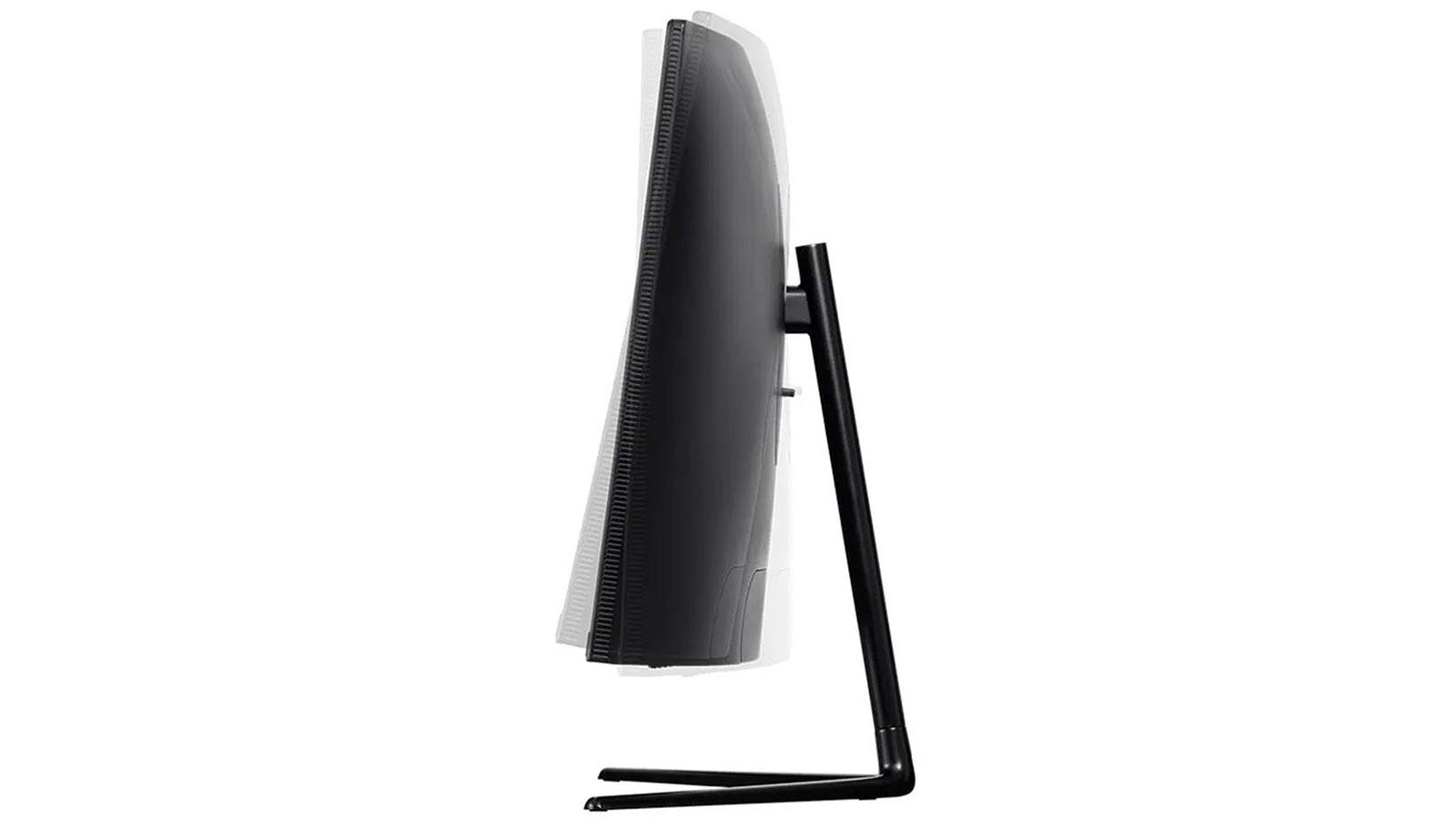
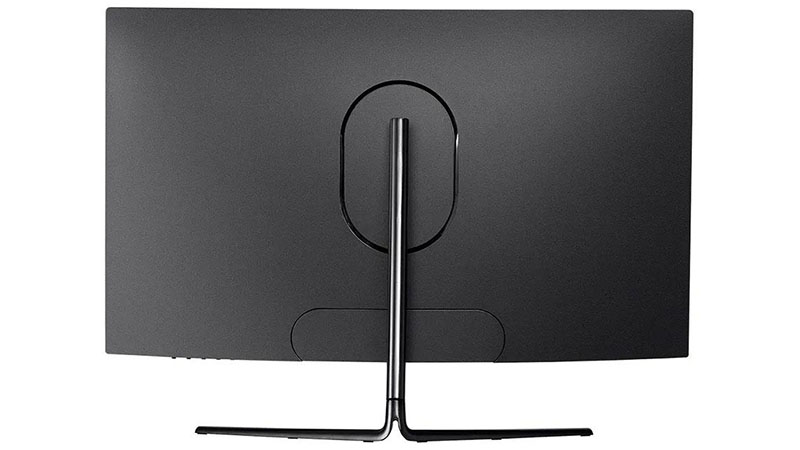
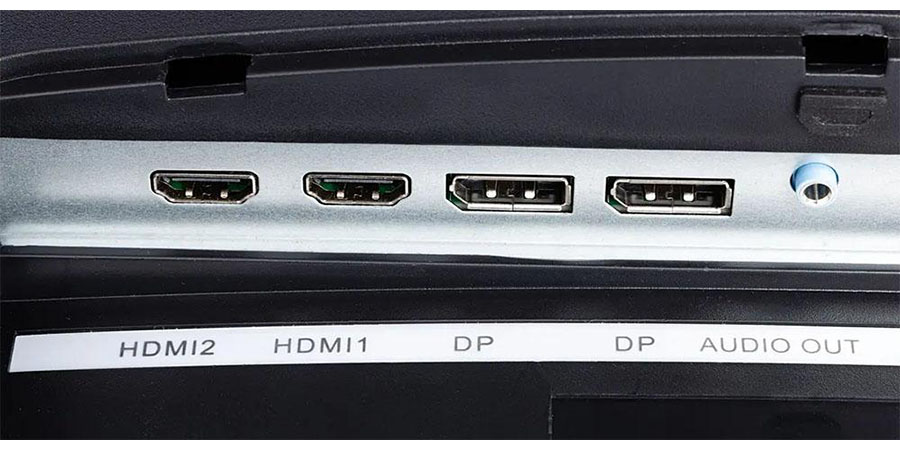
The Monoprice Zero-G 42891’s styling is simple and to the point. You won’t immediately say “gaming monitor” when you see it but that isn’t a bad thing. It blends into just about any environment from office cubicles to high-end gaming desktops. From the front, you can see a tiny Monoprice logo and the five control buttons protruding at the bottom right. The bezel is 10mm wide around the top and sides, and 19mm on the bottom. It sits flush for a clean look when the power’s off.
A lighting feature in the back creates a red ring around the upright’s attachment point. You can turn it on steady or make it flash if you want to distract your opponents or turn it off if you wish. The power LED is blue and shines a small disc on the desktop.
The stand offers only a tilt adjustment, 5 degrees forward and 25 degrees back. The screen sits too low for vertical operation unless you lower your chair or raise the monitor up on a pedestal. The point where the stand snaps in place has a bit of play, so finding the ideal angle takes a few tries. However, once set, it’s solid. The base is all metal and keeps everything firmly planted.
You can see the 1500R curve in the top view and in the side photo, which shows the panel’s total thickness of 4.4 inches. The main draw of this screen, and all other 32-inch 16:9 monitors, is height. It’s wide, but that extra altitude envelopes the viewer in a way no 21:9 panel can.
The input panel is well-stocked with two DisplayPort 1.4 and two HDMI 2.0 inputs. For G-Sync operation, you’ll need to use DisplayPort (see DisplayPort vs HDMI). Both inputs support HDR10 signals with automatic switching. There is a 3.5mm jack that can accommodate headphones or powered speakers for audio. There is no built-in sound or USB ports.
OSD Features of Monoprice Zero-G 42891
The Monoprice Zero-G 42891’s OSD is controlled by four keys on the bottom right of the panel. They click firmly and are a bit clunky compared to the joysticks that come on so many monitors today. But there are plenty of options in the OSD to get the job done for video processing and image adjustment.
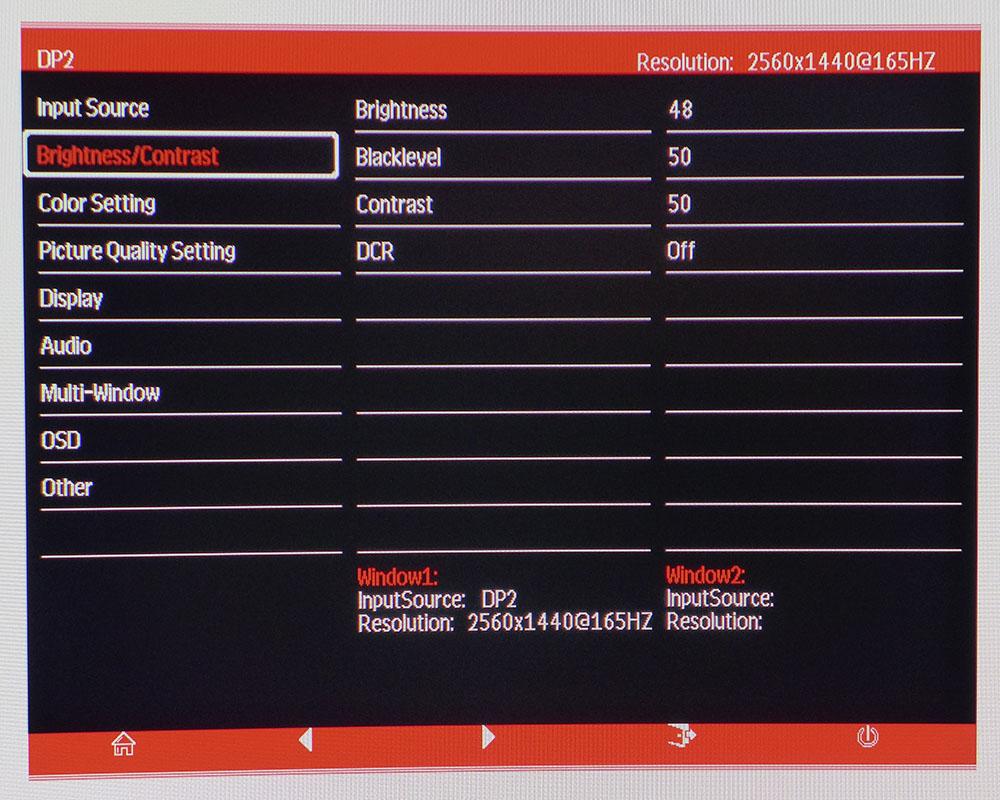
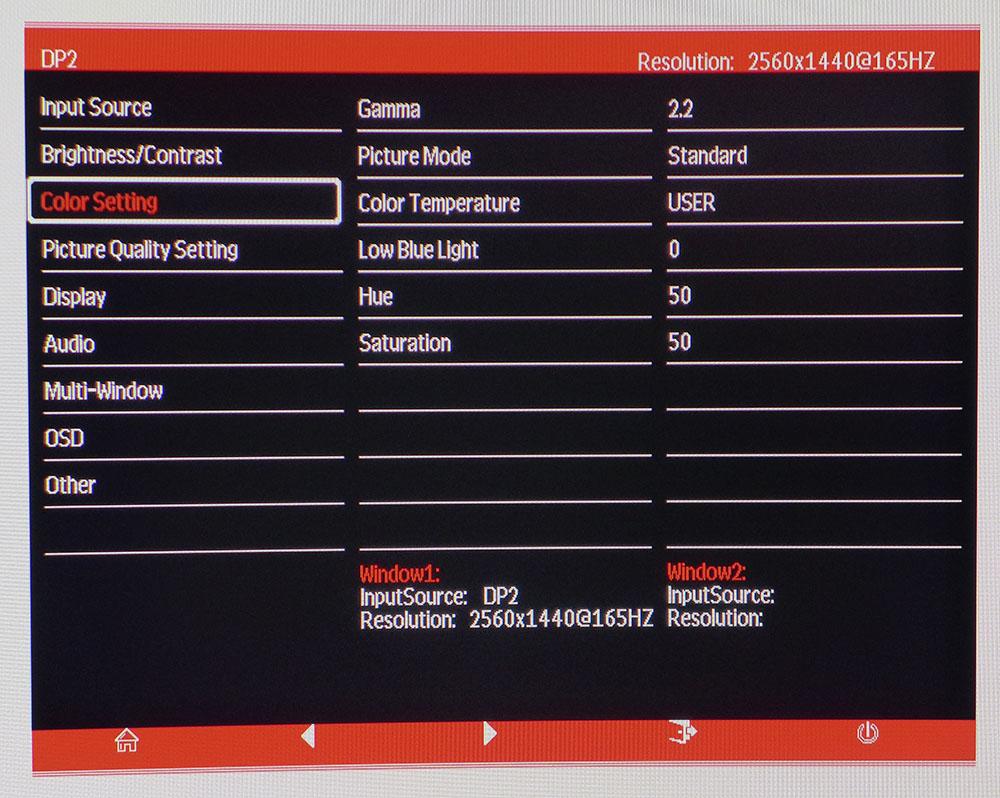

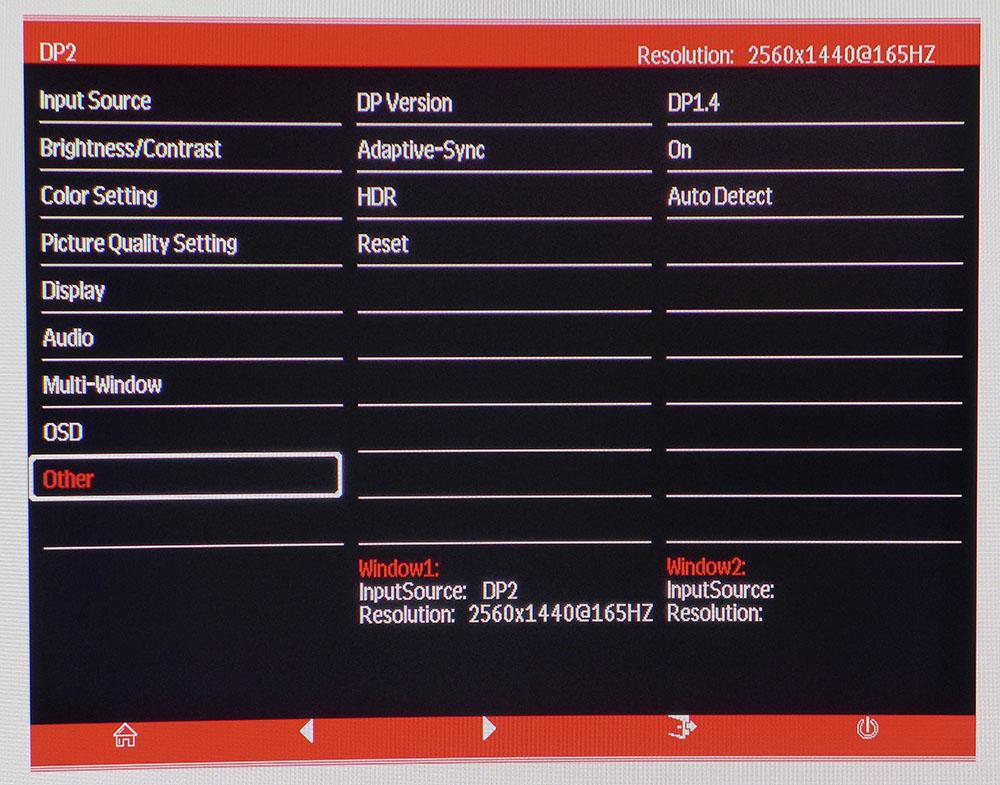
The Monoprice Zero-G 42891 features a black level adjustment that can be used to increase shadow detail visibility. I didn’t need to adjust it for my tests, but it’s there if you need to see better in the dark. DCR is a dynamic contrast option that works for SDR signals. It subtly improves contrast with no apparent loss of shadow or highlight detail.
The Color Setting menu includes gamma presets, color temps, RGB sliders, a low blue light function, and hue/saturation sliders for all six colors. Color is reasonably accurate out of the box, and gamma tracks close to 2.2 as it should. I only needed to tweak the RGB sliders slightly to remove a blue tint from neutral white and gray tones (details are below). There are six picture modes of which Standard is the default and best. There is no sRGB mode, so you’ll be seeing the extended gamut for both SDR and HDR content.
Picture Quality Setting is where you’ll find most of the available video processing features. Response Time is a three-level overdrive with very subtle differences between its options. I ran it on its highest setting with no apparent ghosting and decent motion blur control. MPRT is the backlight strobe that will run to the 165 Hz maximum. To unlock it, disable Adaptive-Sync, overdrive and HDR first. It smooths motion effectively, but I saw a slight phasing artifact in finely detailed textures that was distracting.
In the Other menu is the Adaptive-Sync toggle and the HDR options. By default, it’s turned off. You can change it to Auto Detect, and it will indeed do that. That’s unusual at this price point. Most budget HDR monitors make you switch modes manually.
If you’re looking for aiming points, they appear with two clicks of the second control key. You get red or green, dot or cross shapes. To turn it off, press the fourth key.
Calibration Settings for Monoprice Zero-G 42891
The Monoprice Zero-G 42891 ships in its Standard picture mode, and that is the best choice whether you calibrate or not. Without adjustment, the grayscale is a bit blue, but the picture looks good for most content. Contrast is very high, which enhances perceived color saturation.
To improve the image further, I selected the User color temp and adjusted a set of RGB sliders. They are a bit coarse, so I couldn’t achieve the reference level, but I did make a visible improvement and increased contrast in the bargain. My recommended settings are below.
For HDR signals, the Zero-G 42891 switches modes automatically if you HDR Auto Detect selected in the Other menu. There are no image adjustments available for HDR content.
| Picture Mode | Standard |
| Brightness 200 nits | 48 |
| Brightness 120 nits | 20 |
| Brightness 100 nits | 13 |
| Brightness 80 nits | 7 (min. 58 nits) |
| Contrast | 50 |
| Gamma | 2.2 |
| Color Temp User | Red 51, Green 49, Blue 49 |
Gaming and Hands-on with Monoprice Zero-G 42891
With a reasonably bright and very contrasty picture, the Monoprice Zero-G 42891 is a great general-use display. The curve doesn’t enhance or detract from activities like spreadsheet work or word processing. I didn’t have to turn my head quite as much to see everything as I would with a flat screen, but the difference in that regard was subtle. There was no image distortion, and the curve is not noticeable when viewing text and business graphics.
The curve slightly enhances photos and video. It managed to bring a little more of the image into my peripheral vision. And I appreciated the extra height though I am predisposed to like the 32-inch 16:9 format because that matches my primary work display. I never saw the QHD resolution as a limiting factor. Detail and sharpness were strong and smooth from a three-foot viewing distance. The extended color gamut and high contrast made just about everything pop.
Finding the best combination of video settings for gaming proved to be a compromise. If you want the best possible motion resolution, avoid HDR. It takes out the overdrive, and that difference can be seen. It isn’t huge, so HDR will give you a bit more color saturation and overall brightness if your game doesn't move rapidly. Doom Eternal looked great in HDR mode with deep reds and sharp detail. But things got a bit soft when I moved quickly through the environment. It was most obvious when panning from side to side.
I also tried MPRT, which took a few steps to set up. You must disable Adaptive-Sync and set HDR to Off; then, you can turn on MPRT. Brightness is reduced by about 15%, which isn’t too bad, but it slightly mutes color. I also noticed the same phasing artifact that appeared in test patterns. It was my least favorite video option.
Ultimately, I went back to HDR for Doom Eternal and Call of Duty WWII. I’m not a skilled player, so the action doesn’t get too crazy when I’m on the virtual battlefield. If you have quick reflexes, I suggest leaving HDR out of the equation so you get the best motion resolution. That makes games very smooth with no apparent lag or breakup. Adaptive-Sync functioned perfectly on both FreeSync and G-Sync platforms (see FreeSync vs G-Sync to find out which is best).
At this price point, you’ll be very happy with the Monoprice Zero-G 42891’s gaming performance, both from a motion resolution and image quality standpoint. The high contrast and vivid color are a real asset and video processing is good enough to deliver a clear picture in both slow- and fast-moving content.
Current page: Features and Specifications
Next Page Response, Input Lag, Viewing Angles and Uniformity
Christian Eberle is a Contributing Editor for Tom's Hardware US. He's a veteran reviewer of A/V equipment, specializing in monitors. Christian began his obsession with tech when he built his first PC in 1991, a 286 running DOS 3.0 at a blazing 12MHz. In 2006, he undertook training from the Imaging Science Foundation in video calibration and testing and thus started a passion for precise imaging that persists to this day. He is also a professional musician with a degree from the New England Conservatory as a classical bassoonist which he used to good effect as a performer with the West Point Army Band from 1987 to 2013. He enjoys watching movies and listening to high-end audio in his custom-built home theater and can be seen riding trails near his home on a race-ready ICE VTX recumbent trike. Christian enjoys the endless summer in Florida where he lives with his wife and Chihuahua and plays with orchestras around the state.
-
Gorlash This is very frustrating... I have a 30" 2560x1600 monitor (HP ZR30w), which I really love... it has been my treasured gaming machine for over a decade now... the only drawback, is that it doesn't have any of the modern bling - >60hz, adaptive sync, other fancy stuff...Reply
I would love to look at a new monitor with newer tech... but I'm still holding out for 16:10 aspect ratio... maybe I will just die here with the other old farts...